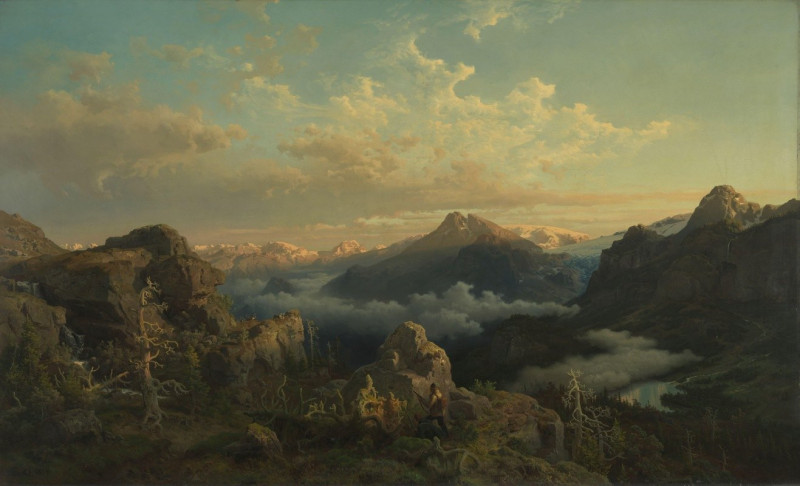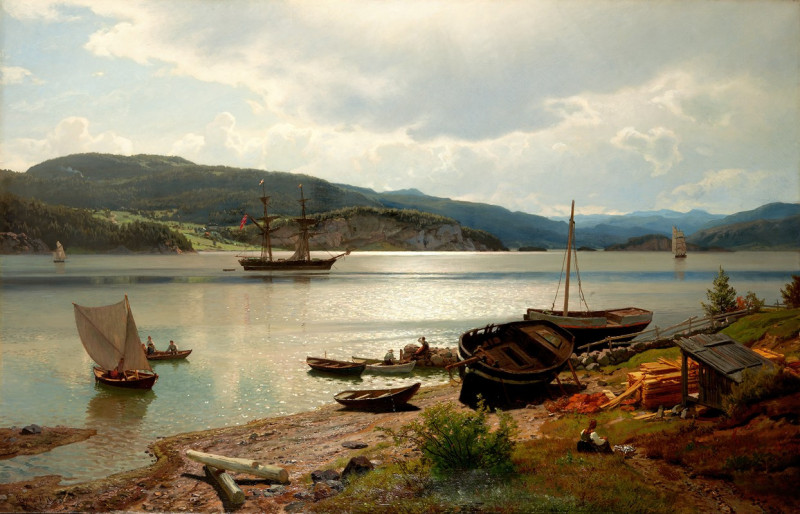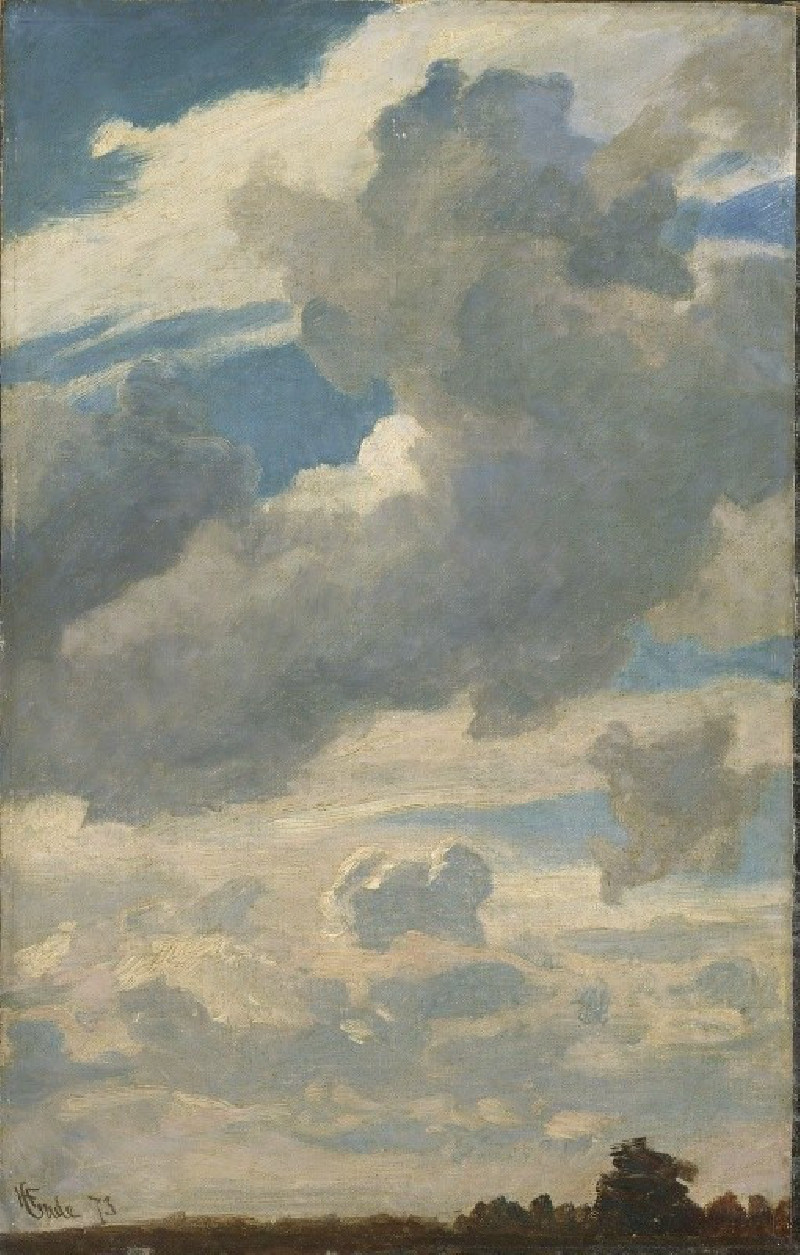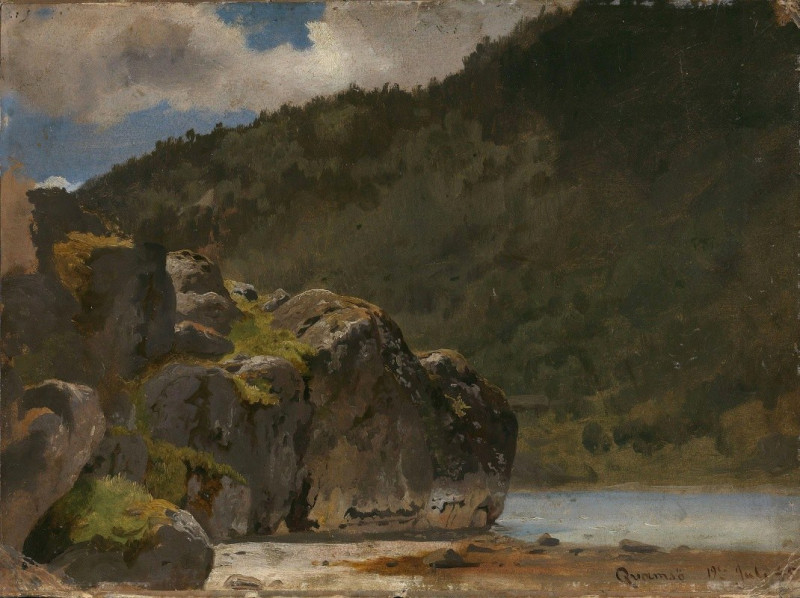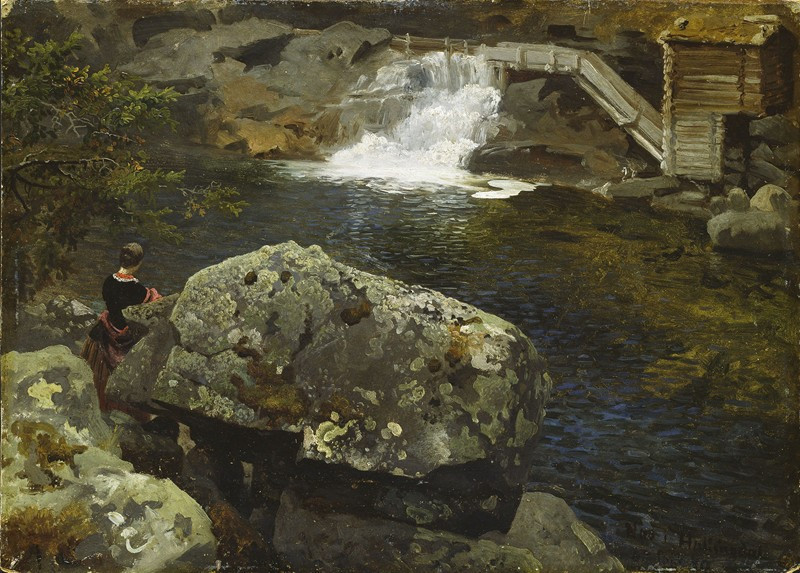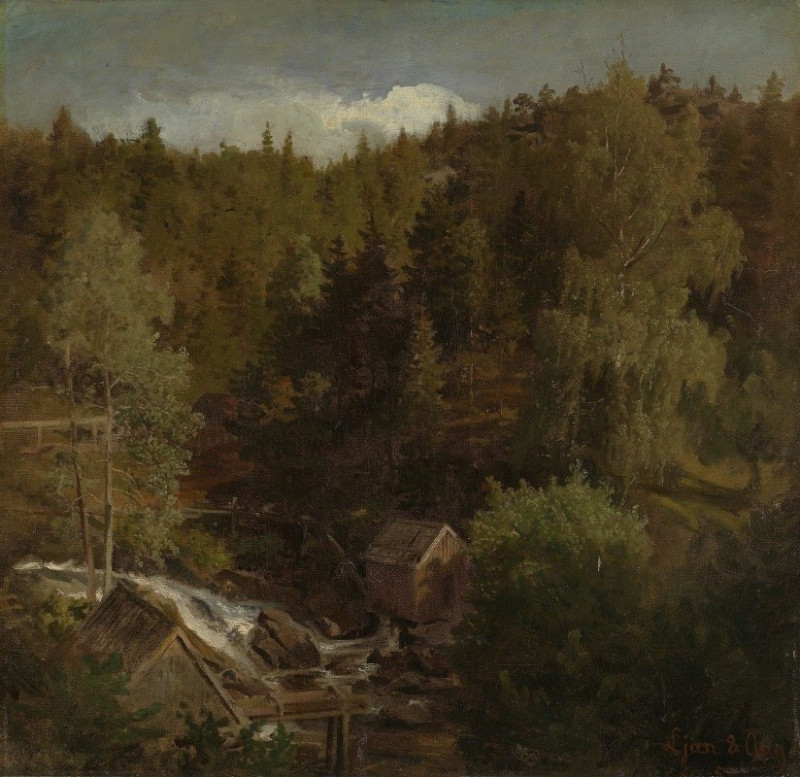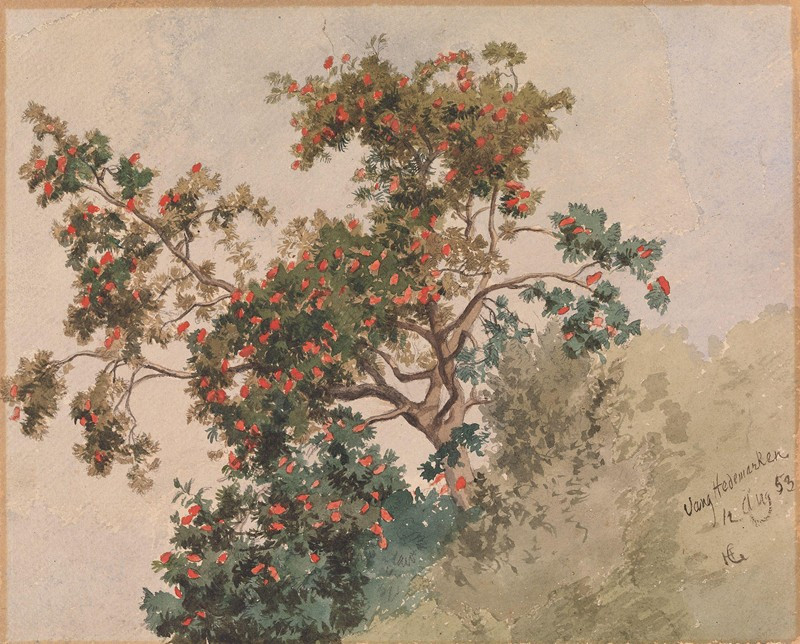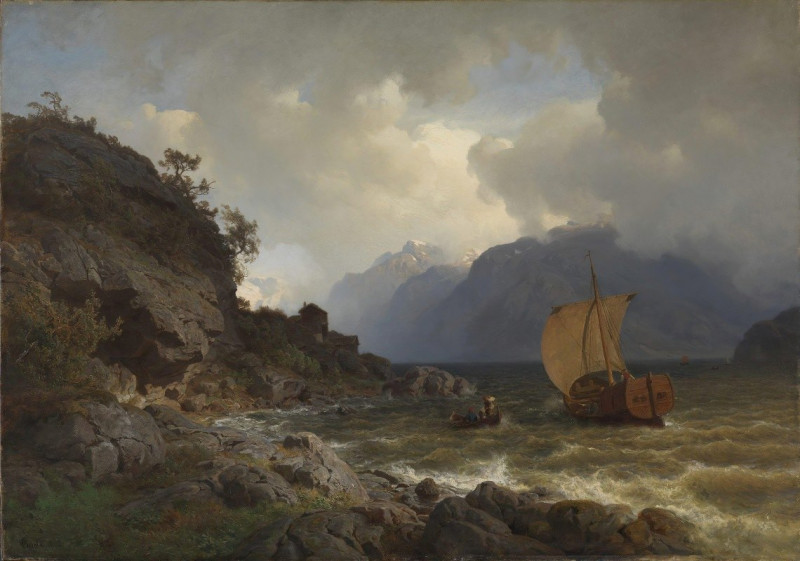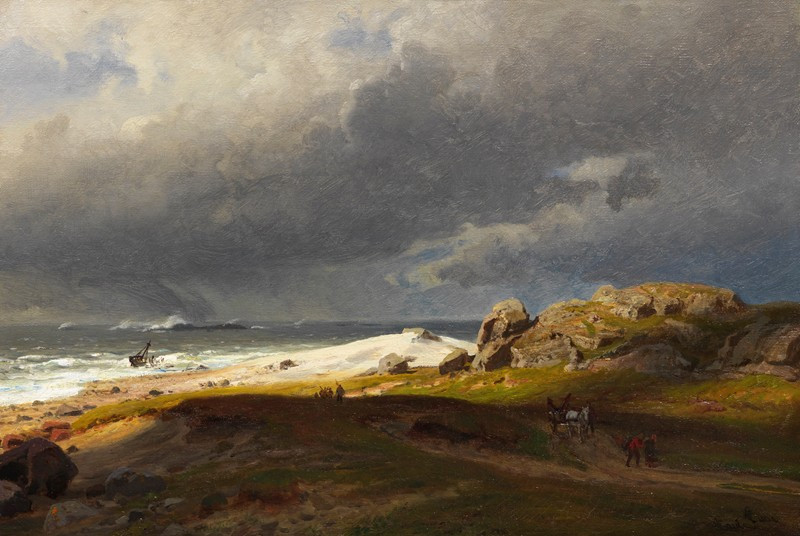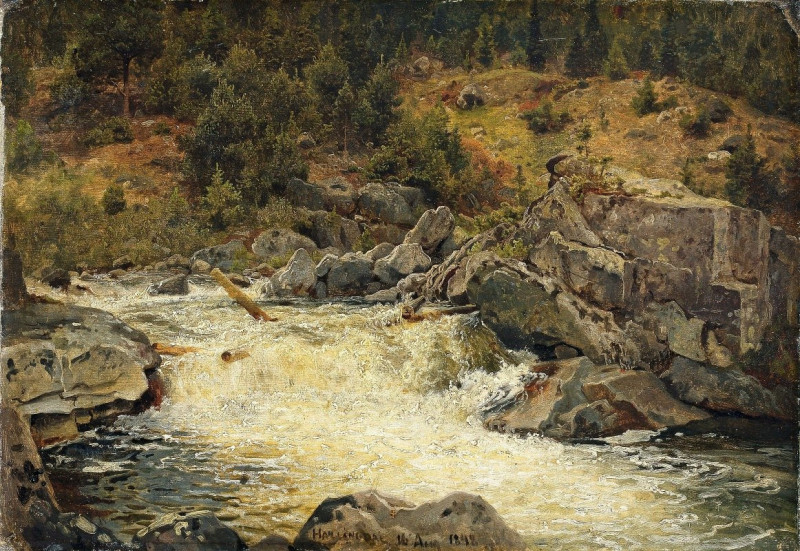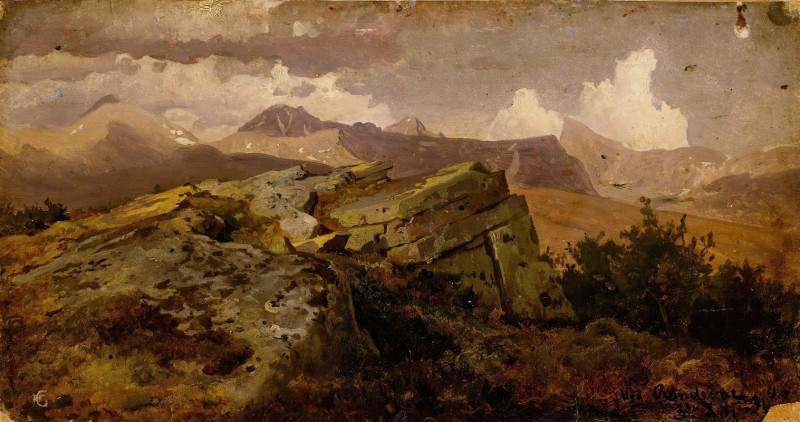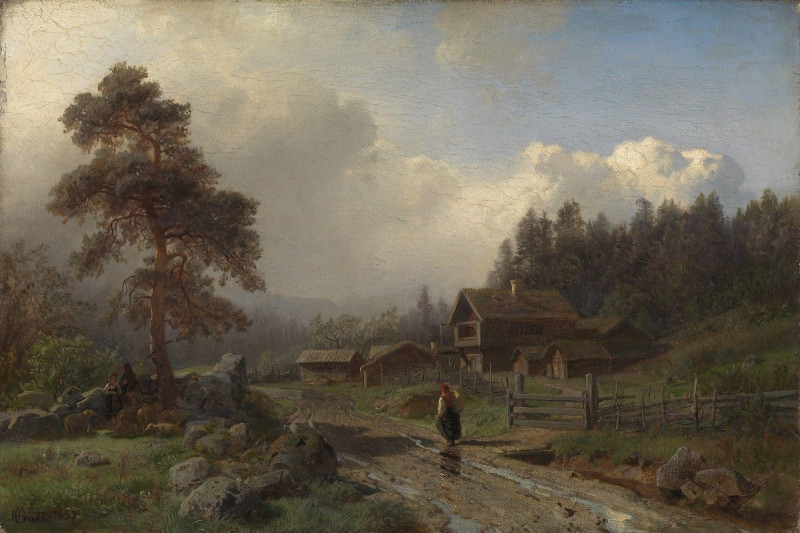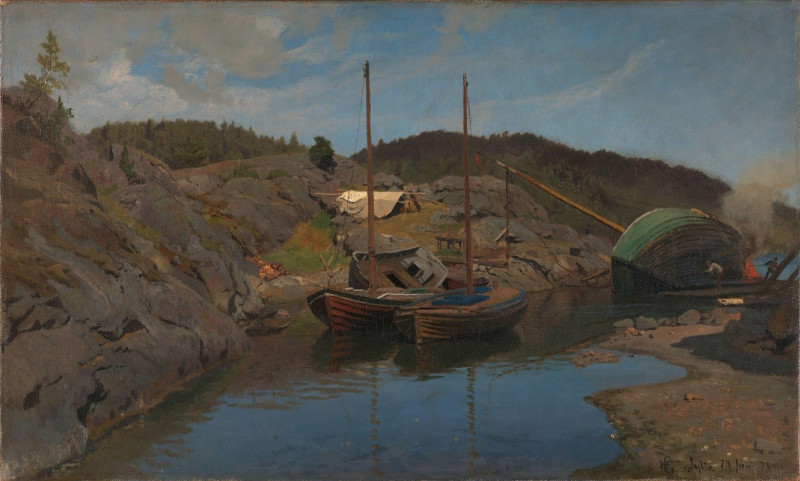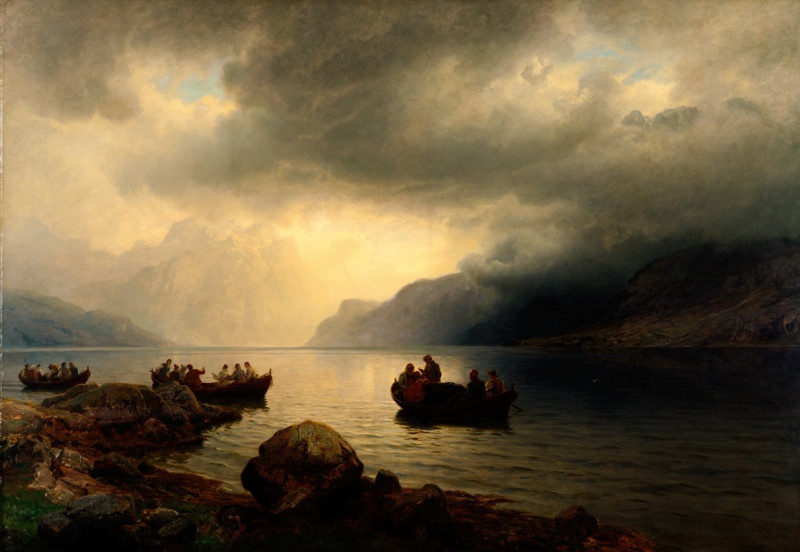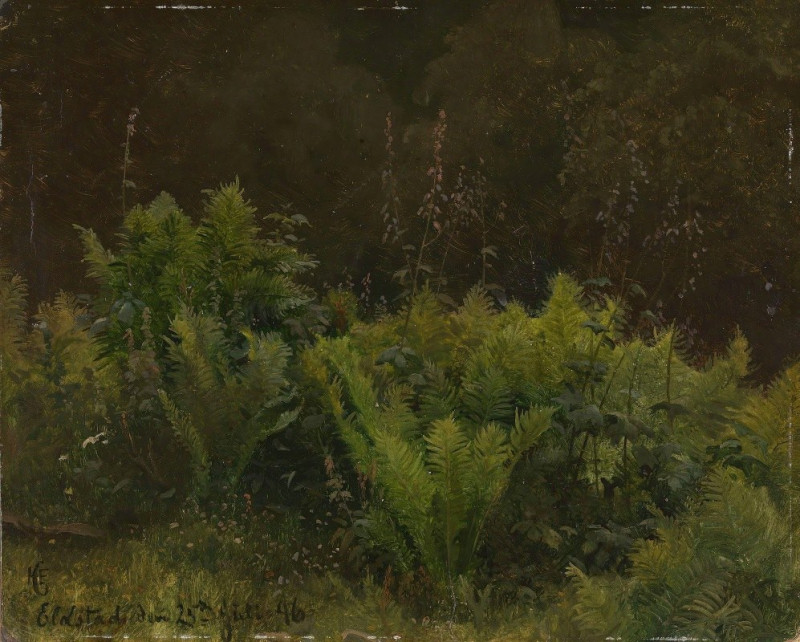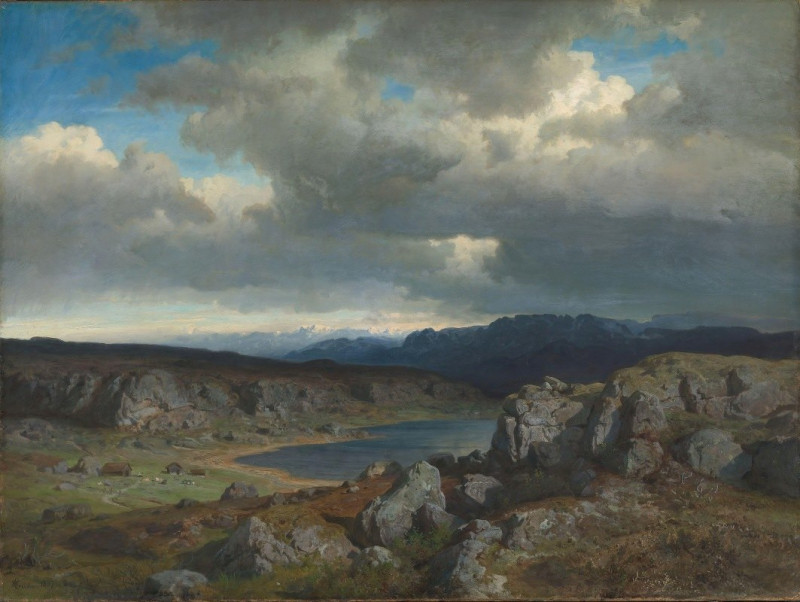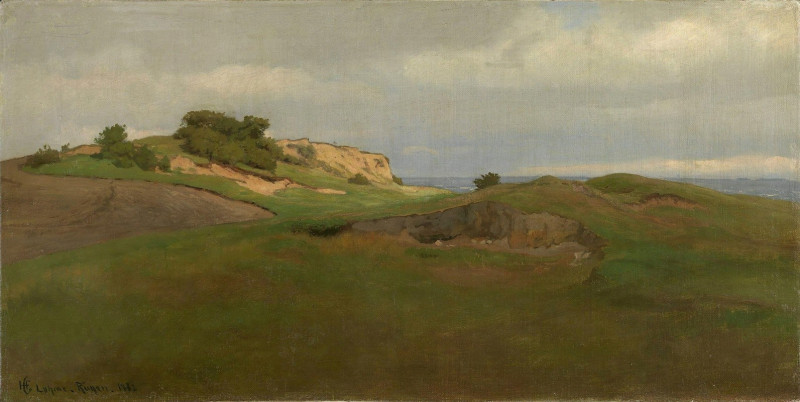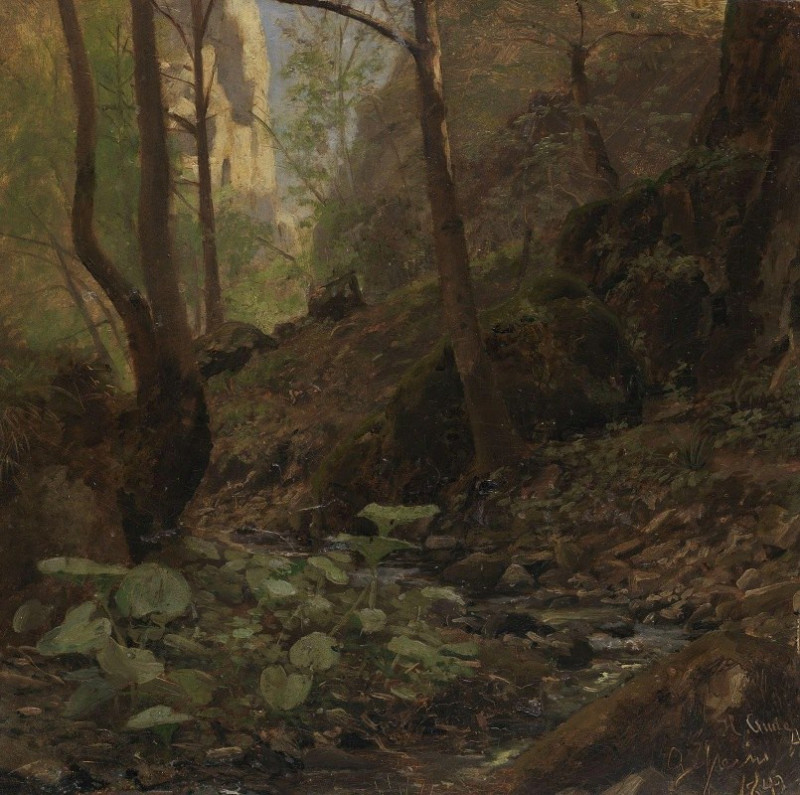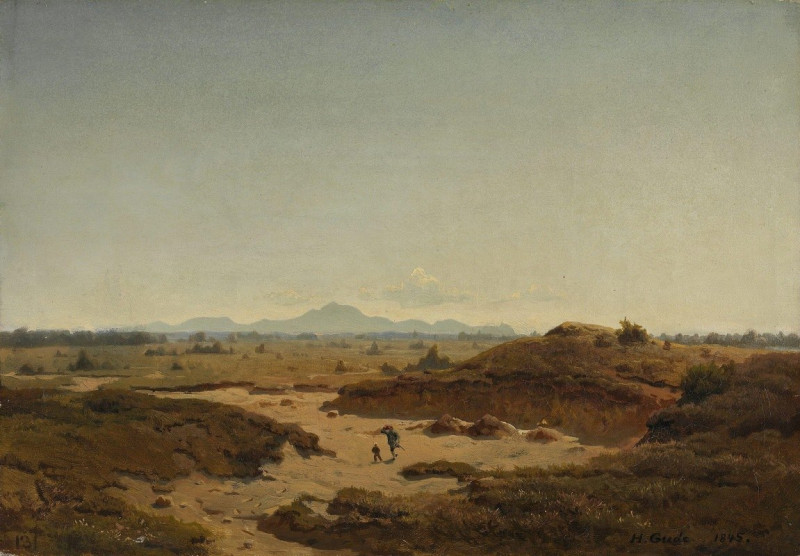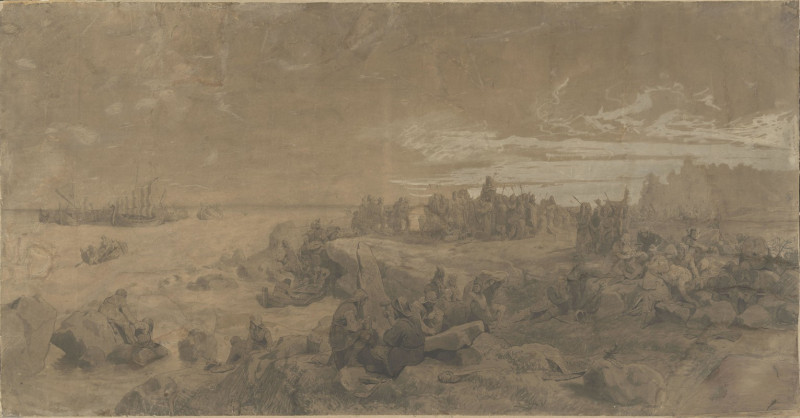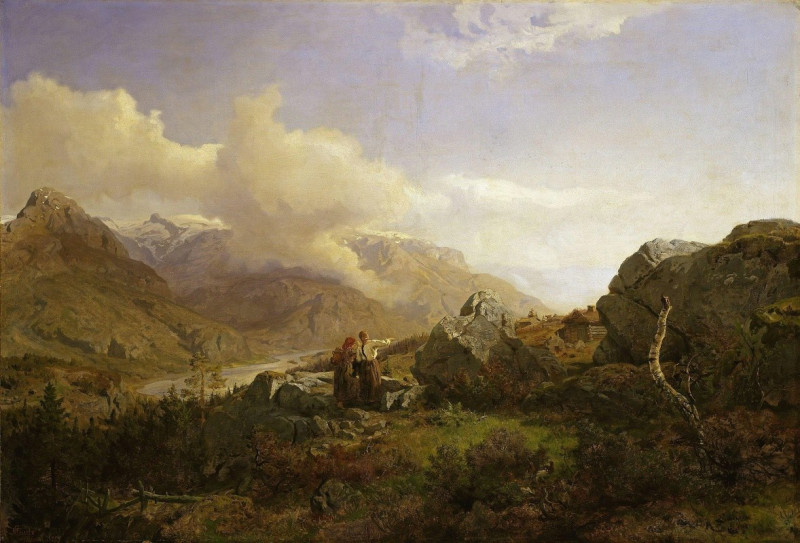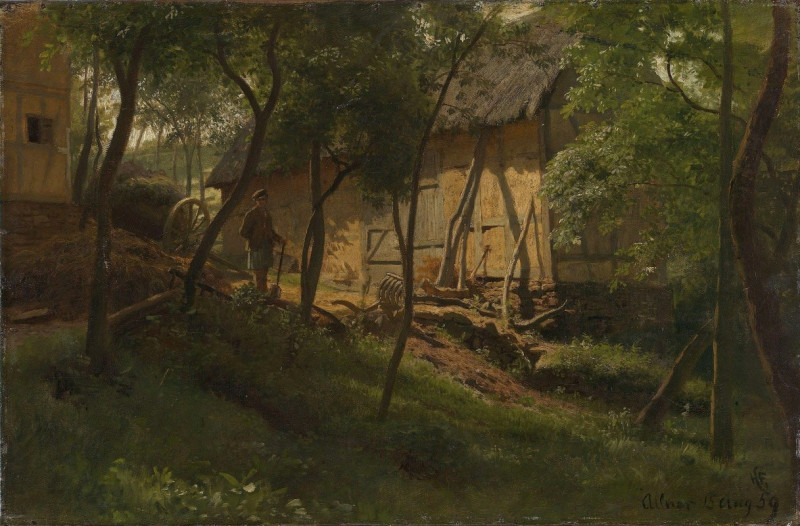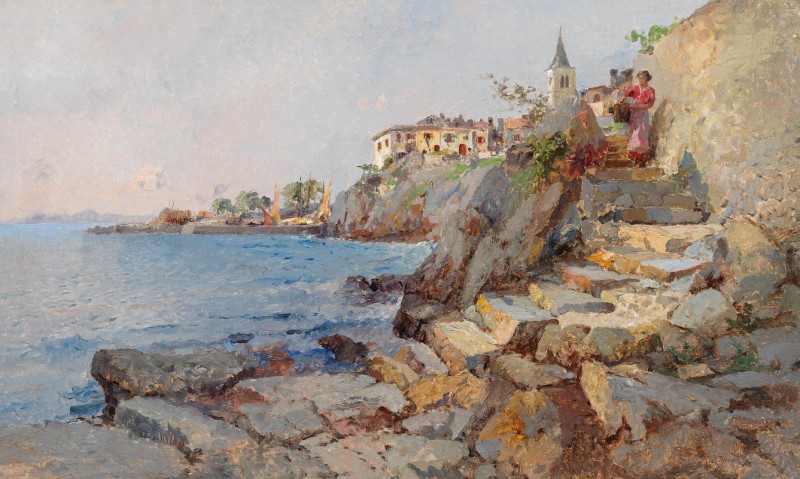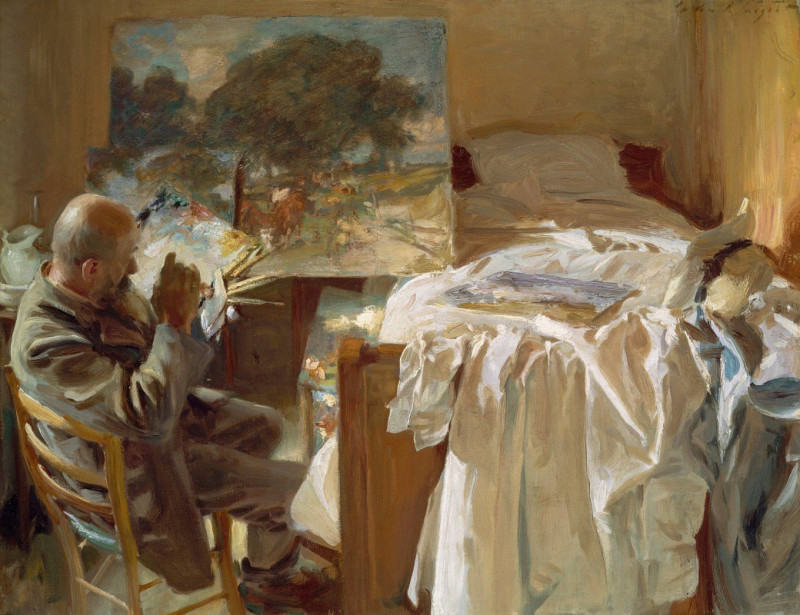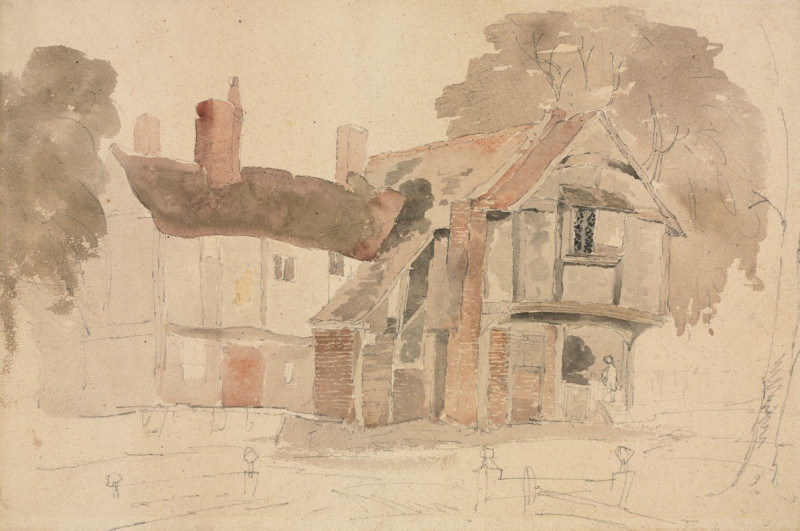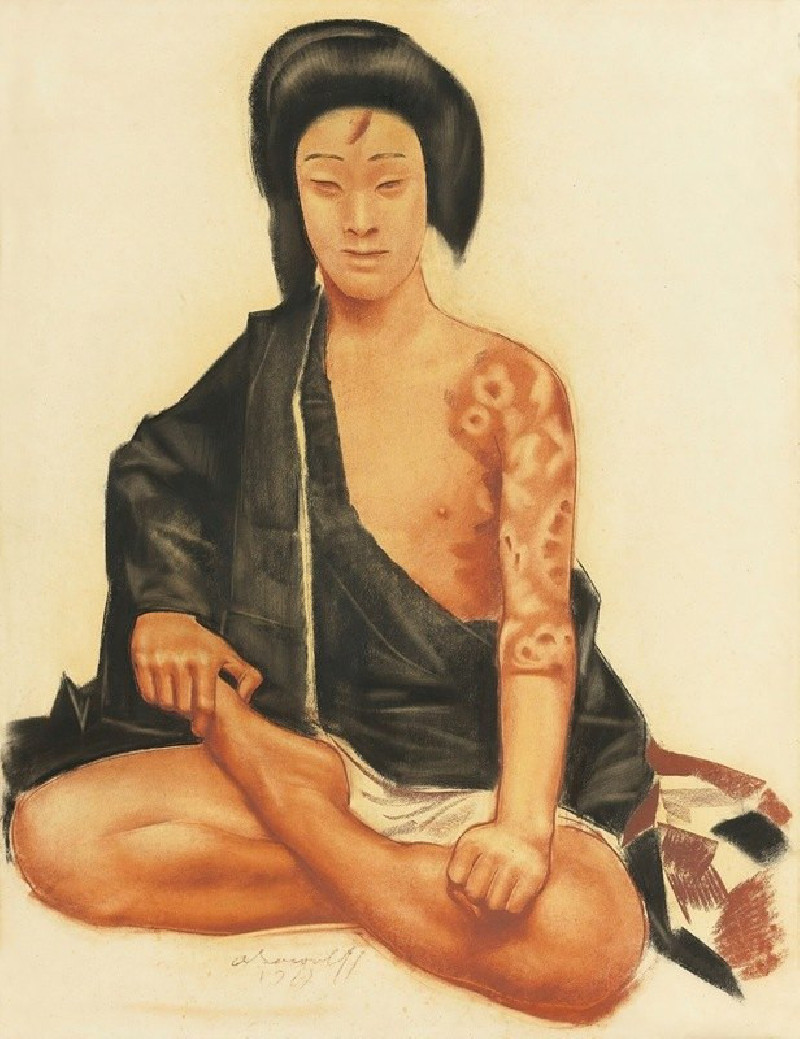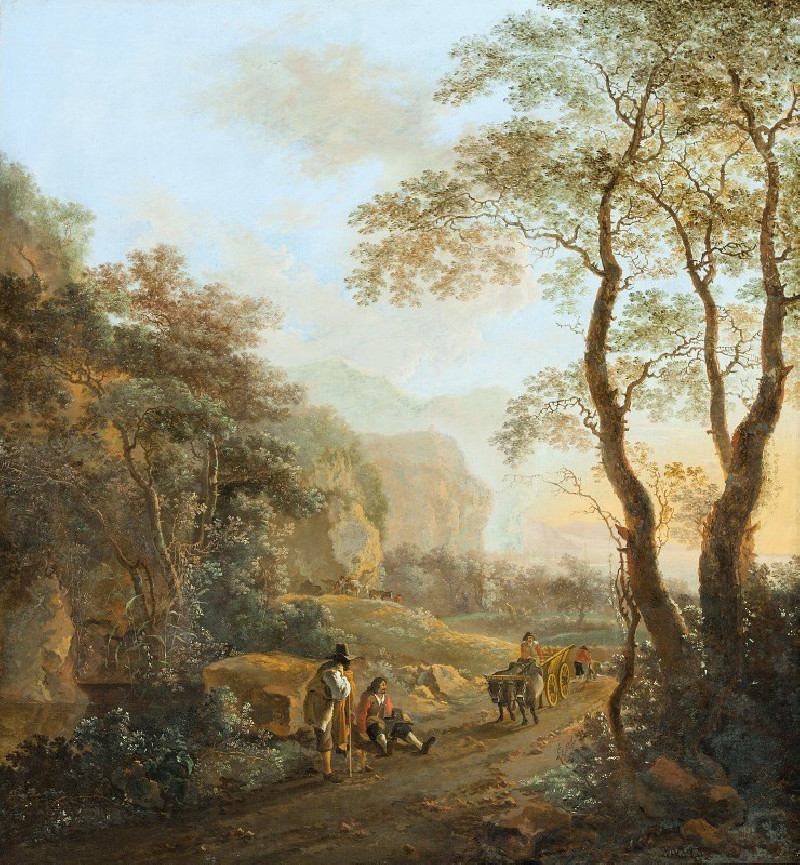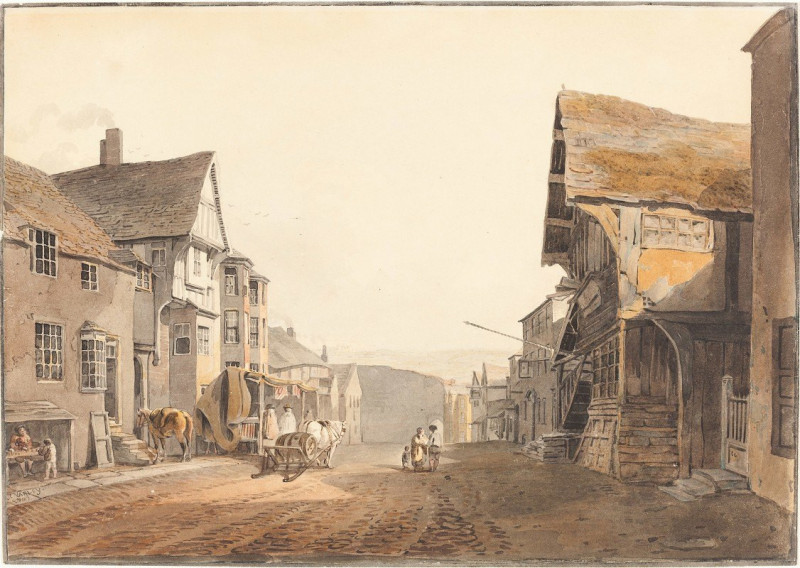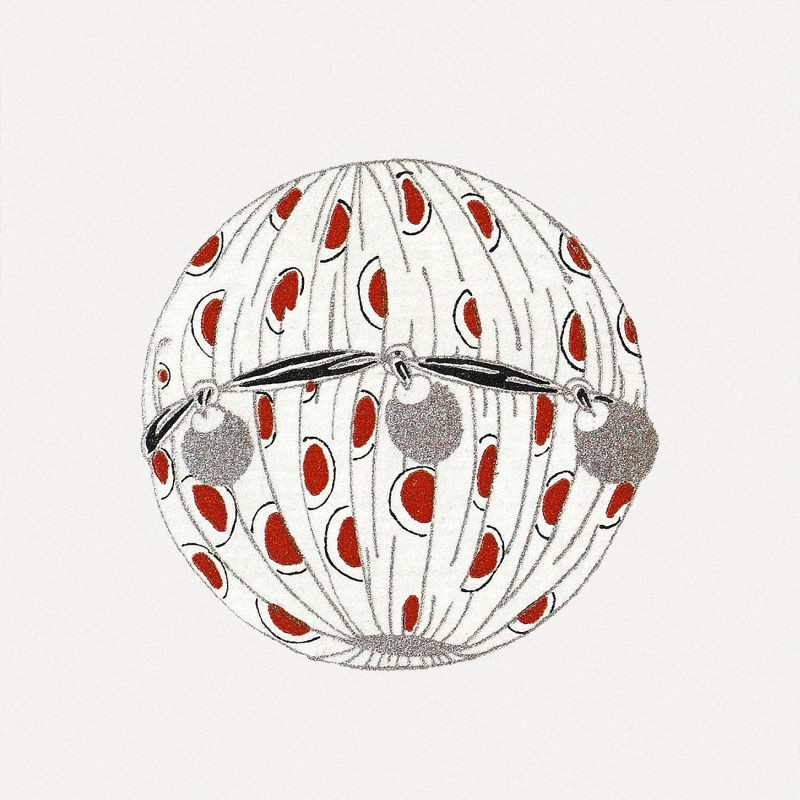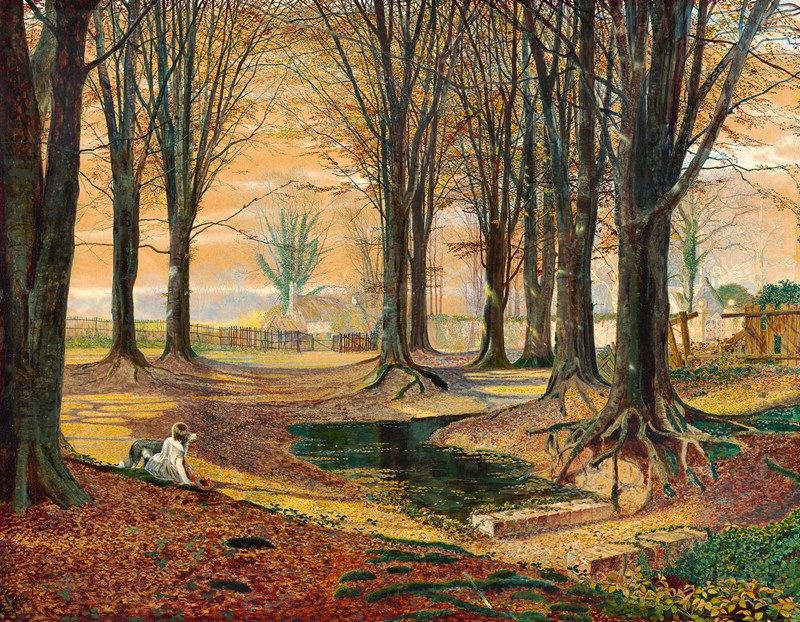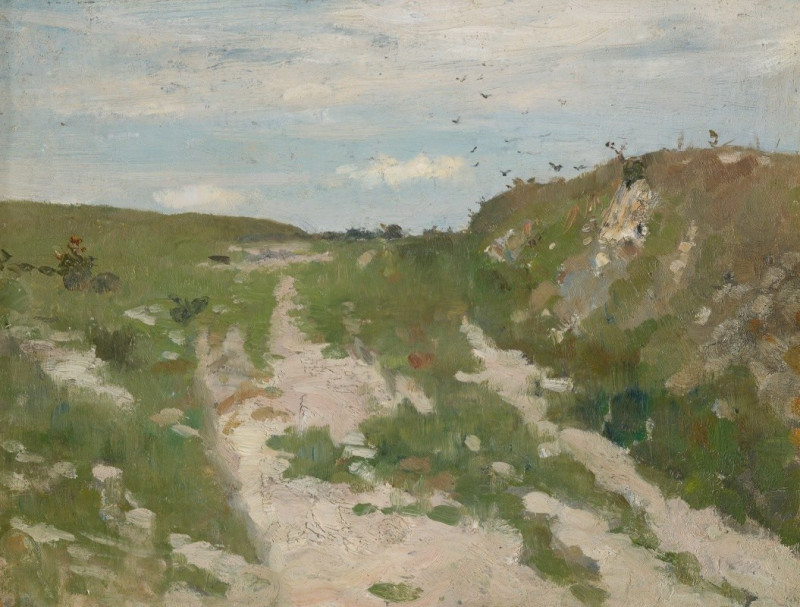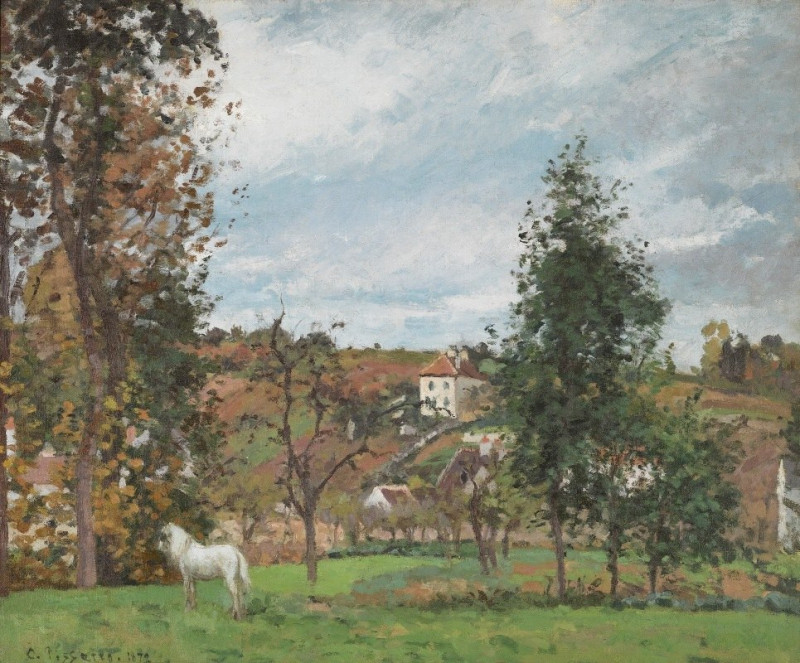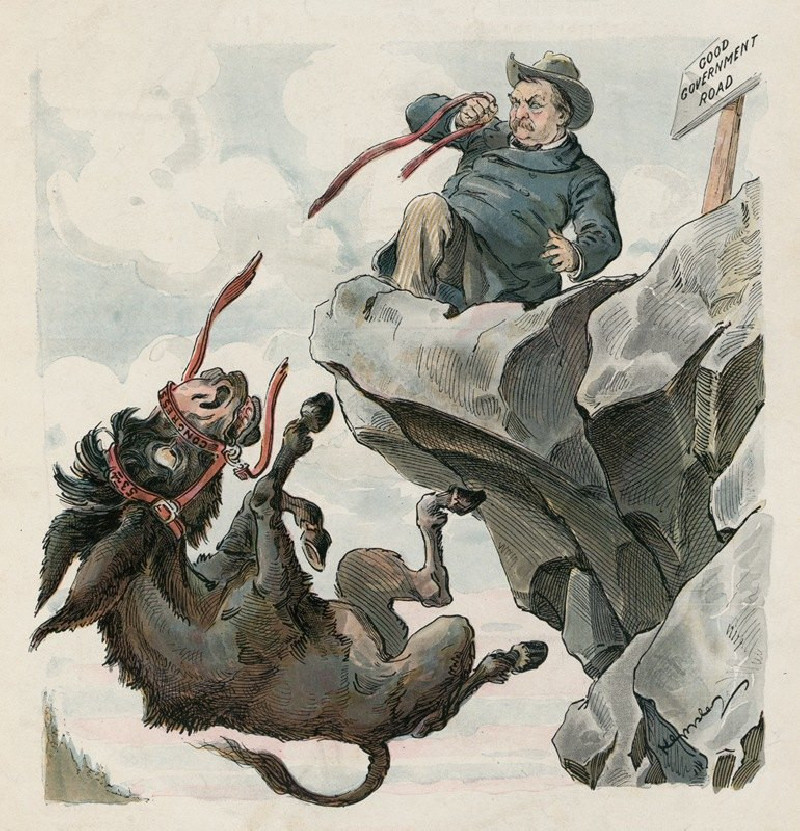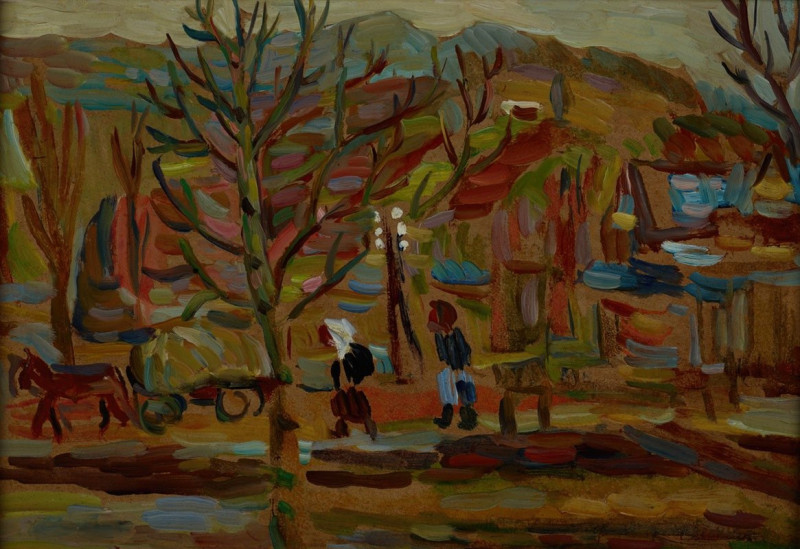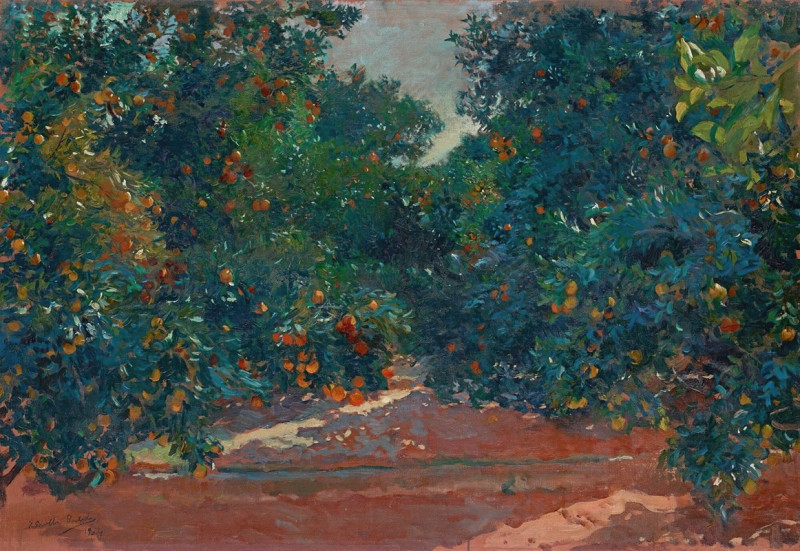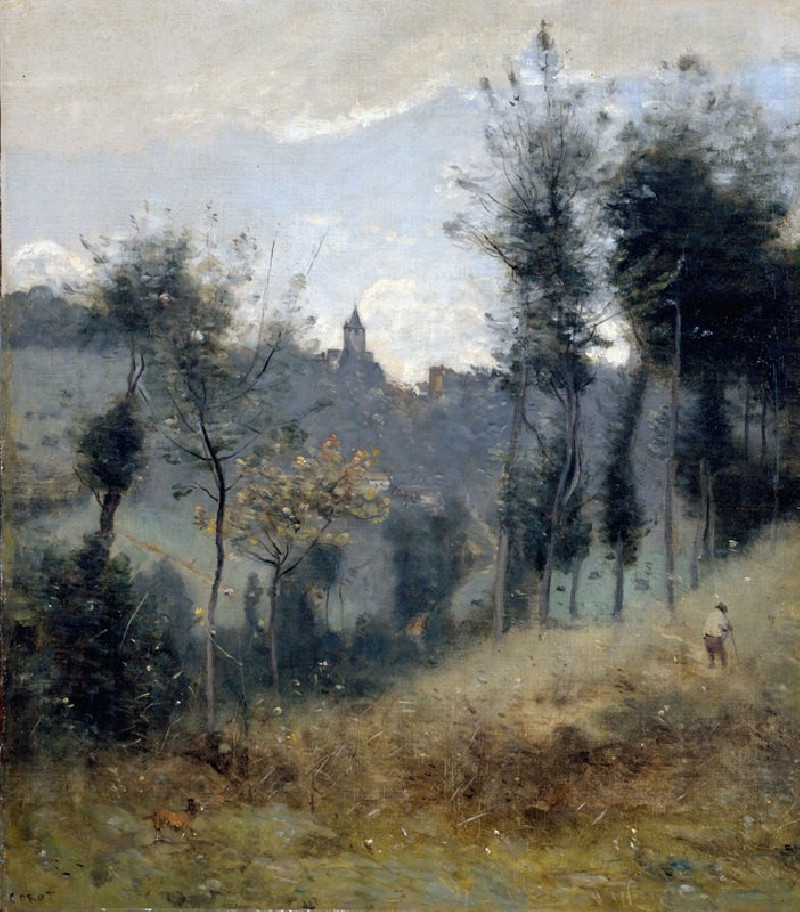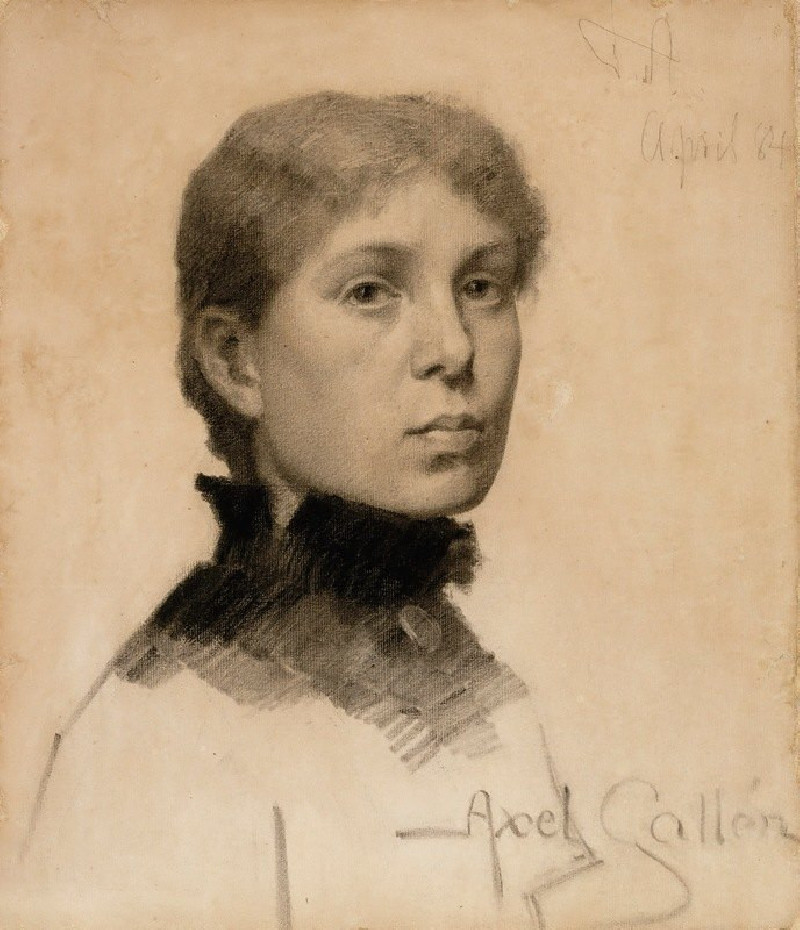Waterfall in Hallingdal (1859)
Technique: Giclée quality print
Recommended by our customers
More about this artwork
Capturing the wild and raw essence of nature, Hans Gude’s remarkable artwork, "Waterfall in Hallingdal," invites viewers to journey into the heart of 19th-century Norway. Completed in 1859, this painting is a masterful depiction of natural beauty, human endeavor, and the dramatic interplay of elements.The scene is set in the rugged landscapes of Hallingdal, where a powerful waterfall cascades through a craggy gorge. The waterfall, a central element in the artwork, bursts forth with an intense energy that seems to animate the entire landscape. Surrounding the frothy waters, the mountains rise stoically, shrouded partly in shadows and mist, suggesting the immense scale and the majestic atmosphere of the location.The painting also features a group of figures engaged in logging, a common activity in the Norwegian woodlands. These workers, depicted in various actions, add a human element to the otherwise wild scene. Some are seen maneuvering logs near the water, while others rest and converse, suggesting a moment of respite amidst their arduous tasks. Their presence not only humanizes the grandeur of the natural landscape but also underscores the historical relationship between humans and nature—a theme of labor and survival against the awe-inspiring backdrop of the natural world.Gude’s skillful use of light and shadow, combined with meticulous attention to detail, from the texture of the rocks to the dynamic motion of water, creates a vivid representation of this Norwegian landscape.
Delivery
Returns
Hans Fredrik Gude (March 13, 1825 – August 17, 1903) was a Norwegian romanticist painter and is considered along with Johan Christian Dahl to be one of Norway's foremost landscape painters. He has been called a mainstay of Norwegian National Romanticism. He is associated with the Düsseldorf school of painting.


